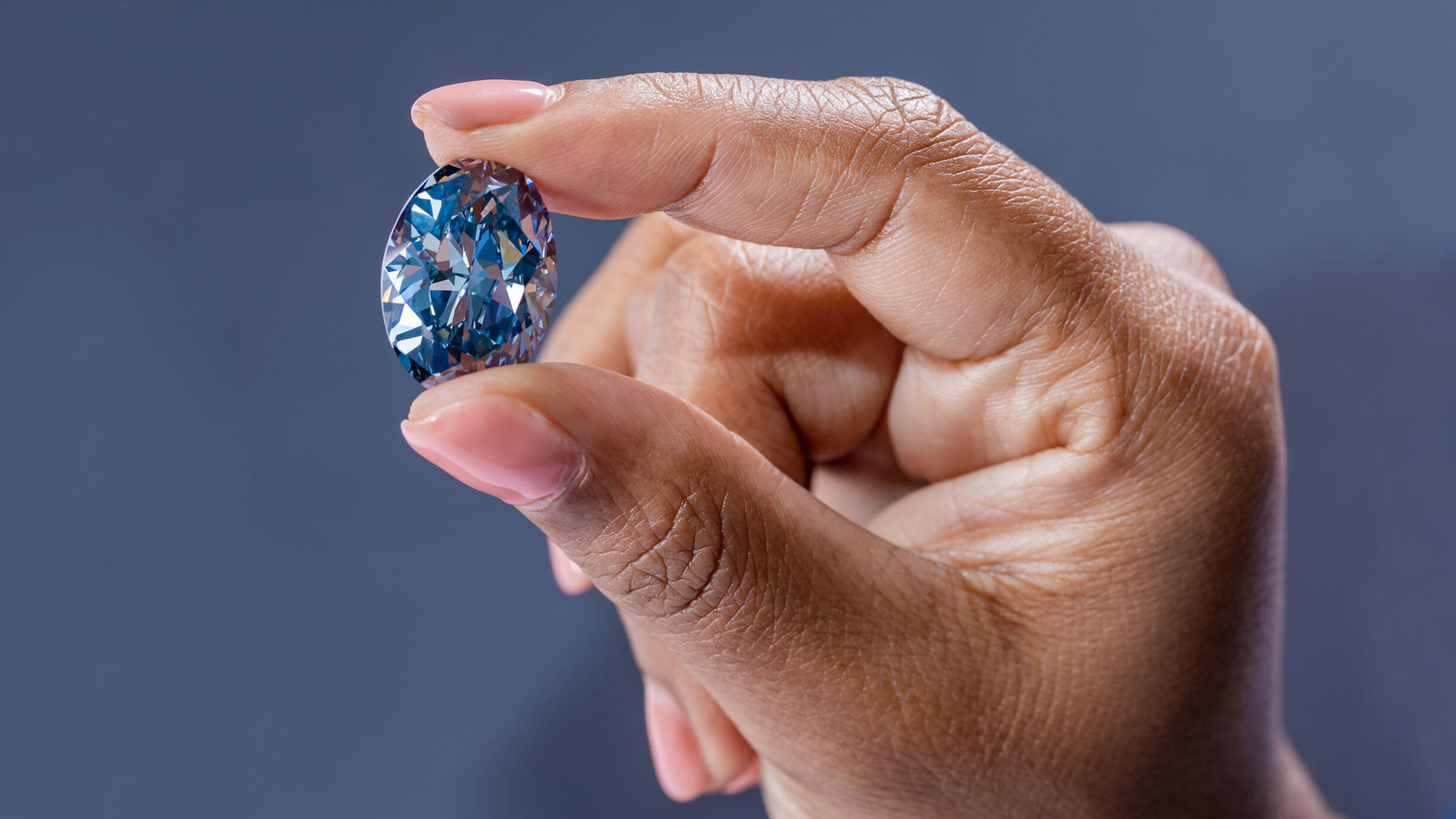Okavango Blue to Go On Public View
 Courtesy of the Okavango Diamond Company
Courtesy of the Okavango Diamond Company On November 10, the dazzling and nearly flawless Okavango Blue Diamond will go on public exhibition for the first time at the American Museum of Natural History. The Okavango Blue, a “fancy deep blue” diamond in an oval brilliant-cut weighing 20.46 carats, will be the centerpiece of a display featuring diamonds from Botswana. The gem, which is on loan from Okavango Diamond Company—wholly owned by the Government of Botswana—will be on view in the Melissa and Keith Meister Gallery within the Museum’s new Allison and Roberto Mignone Halls of Gems and Minerals.
“This is a once-in-a-lifetime opportunity for Museum visitors to see this truly spectacular blue diamond while learning about diamonds more broadly and enjoying all the exhibits in our gorgeous new Mignone Halls of Gems and Minerals,” said Museum President Ellen V. Futter. “We are grateful to the Okavango Diamond Company and the government of Botswana for giving us the opportunity to display this fantastic specimen and to inform our visitors about Botswana’s diamonds and its ethical diamond mining program.”
Botswana is the second-largest producer of natural diamonds in the world and a major source of remarkable, gem-quality, and ethically sourced diamonds. The exceptional blue diamond is from one of the world’s largest open-pit diamond mines, the Orapa Mine in Botswana, and is the largest of its kind found in the country to date. The Okavango Blue was named after Botswana’s Okavango Delta, an area of exceptional biodiversity and an UNESCO World Heritage site. The diamond has a clarity grade of “Very, Very Slightly Included,” or VVS1, by the Gemological Institute of America, a classification given to less than 1 percent of the world’s blue diamonds, making the Okavango Blue one of the rarest.
“Blue diamonds are extremely rare—and those of this size, even more so,” said George Harlow, curator of the Museum’s Allison and Roberto Mignone Halls of Gems and Minerals. “While most diamonds contain small amounts of nitrogen, blue diamonds contain lesser amounts of nitrogen, and critically, more boron atoms in their crystal structure, resulting in the captivating hue.”
The Okavango Blue Diamond is the centerpiece of a presentation about the variety of natural diamonds found in Botswana, from more common industrial diamonds—used in construction, manufacturing, and other sectors—to gem-quality ones. Displaying more than 1,000 rough natural diamonds, the gallery explores the different characteristics of diamonds, including size, shape, quality, and color, as well as the unique way that Botswana runs its diamond industry.
Throughout history, gems have at times been used to fuel conflict and exploitation. But the story has been different in Botswana. The first of four large diamond mines were found in the country shortly after it attained independence in 1966, and the newly formed government entered into agreements with tribal leaders to make diamonds a national resource.
“Our natural diamond resources are managed responsibly in a manner that puts the people of Botswana first,” said Okavango Diamond Company Managing Director Mmetla Masire. “There is a strong sense of local pride knowing that these diamonds are improving the lives of Batswana with profits directly reinvested in education, infrastructure, and public health. We are so pleased to share with the world the larger story of the diamond industry of Botswana. The Okavango Blue is not just an ordinary 3-billion-year-old polished carbon element but rather a physical embodiment of the passing of time, a fragment of eternity. Our diamonds tell the rich history and unique journey of Botswana’s development.”
About the Allison and Roberto Mignone Halls of Gems and Minerals
The Mignone Halls of Gems and Minerals feature exhibits with specimens from the Museum’s world-renowned mineral and gem collection and the Melissa and Keith Meister Gallery for rotating exhibitions. Permanent exhibits include two of the largest amethyst geodes on public display, the legendary 563-carat “Star of India” sapphire, the 9-pound almandine Subway Garnet, and the 632-carat Patricia Emerald, among other specimens. The Mignone Halls’ exhibits tell the fascinating story of how the vast diversity of mineral types formed on Earth, how scientists classify them, and how humans have used them throughout the millennia for personal adornment, tools, and technology.